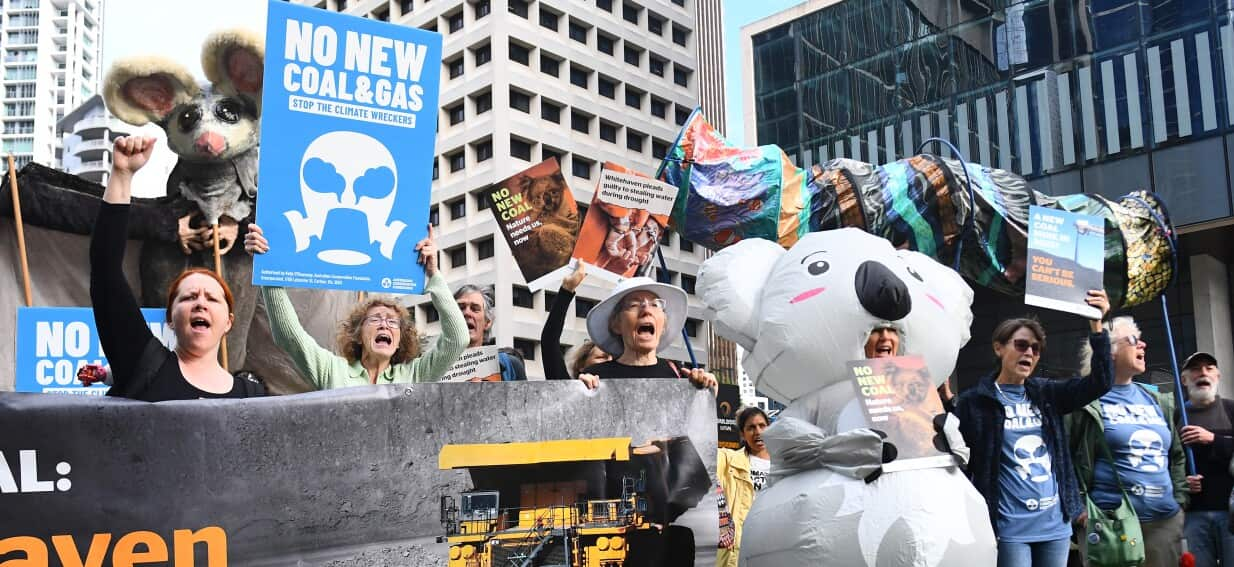Share this @internewscast.com

Protesters have gathered outside a court to oppose one of Australia’s largest potential coal mines, asserting the multibillion-dollar project will lead to a “climate catastrophe”.
A few dozen individuals convened on Monday to voice their opposition to Whitehaven’s Winchester South open-cut mine, likening it to a 1960s plan to dredge the Great Barrier Reef for fertiliser production.
This protest coincided with the Land Court in Brisbane starting to hear objections against the proposal, which plans to extract 17 million tonnes of coal from the Bowen Basin annually.
Who is opposing the mine proposal?
Australian Conservation Foundation’s Adam Beeson compared the proposed mine with reef dredging and oil drilling, ideas blocked by the courts decades ago as he addressed protesters outside.
“What truly is the distinction between removing coral and extracting coal, raising the global temperature that causes coral bleaching and coral death?”, Beeson questioned.
He said his foundation along with the Mackay Conservation Group would tell the court the mine’s return was “not worth this impact”.
Mackay Conservation Group climate campaigner Imogen Lindenberg said Winchester South could be the nation’s biggest new coal mine.
“If this mine goes ahead, it will create more pollution than Australia produces in one year,” she said.
“We are already living in a time of climate catastrophe.
“Many folks’ homes have been flooded, there are bushfires – it’s not just us, it’s all the beautiful threatened species.”
What has Whitehaven said?
Barrister Saul Holt KC, acting for Whitehaven, said in his opening address that the Winchester South project would bring significant economic benefits.
He stated that the mine has extensive community backing and would generate $696 million in state royalties along with 500 new jobs during its construction and operation phases.
“It’s the right project, in the right place, by the right miner at the right time,” he said.
Holt said Winchester would also support manufacturing that was vital for Australia’s transition to renewable energy.







